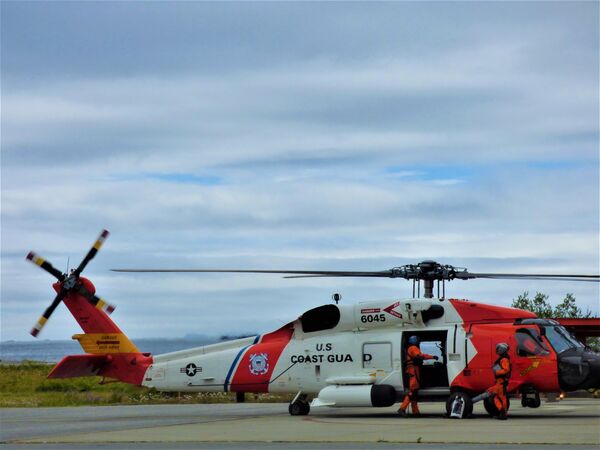
The US Coast Guard is shifting over to a fleet of MH-60 helicopters. (Michael Fabey)
The US Coast Guard (USCG) expects to bolster its high-latitude helicopter air operations out of Kodiak, the USCG Arctic gateway, with the planned shift from its EADS MH-65D Dolphins to an entire fleet of Sikorsky MH-60T Jayhawks.
“The 60s have greater range,” Lieutenant Commander Lars Anderson, an HC-130 Long Range Surveillance Aircraft pilot and USCG Air Station Kodiak assistant operations officer, told Janes. “They have a bigger payload [-carrying capability].”
The Jayhawks have a range of about 700 n miles (1,296 km), while the Dolphins have a range of about 290 n miles (537 km).
That extended range should help conduct search-and-rescue (SAR) and other high-latitude missions, he said.
Air Station Kodiak has six MH-60Ts and four MH-65Ds.
The shift will also help create a single helicopter logistics train for the service, although USCG officials note they will also have to deploy larger air and maintenance crews for the MH-60Ts than it does for the MH-65Ds.
Some administrative kinks need to be worked out. For example, Lt Cdr Anderson notes that while MH-65Ds are based in Kodiak, they receive their orders from Alaska Patrol, and some of the aircraft are embarked on cutters.
“We are moving in the direction of deploying our 60s on cutters,” he said.
Coastguard vessels cannot accommodate the bigger HH-60Ts, he said. The service is considering acquiring those aircraft with folding blades and folding tail sections so they can fit into the ships' tight spaces.
“We are working hard to find solutions that will get us to that point.”
For both rotary- and fixed-wing aircraft, more powerful and advanced platforms help overcome the environmental challenges of the region.
Looking to read the full article?
Gain unlimited access to Janes news and more...







